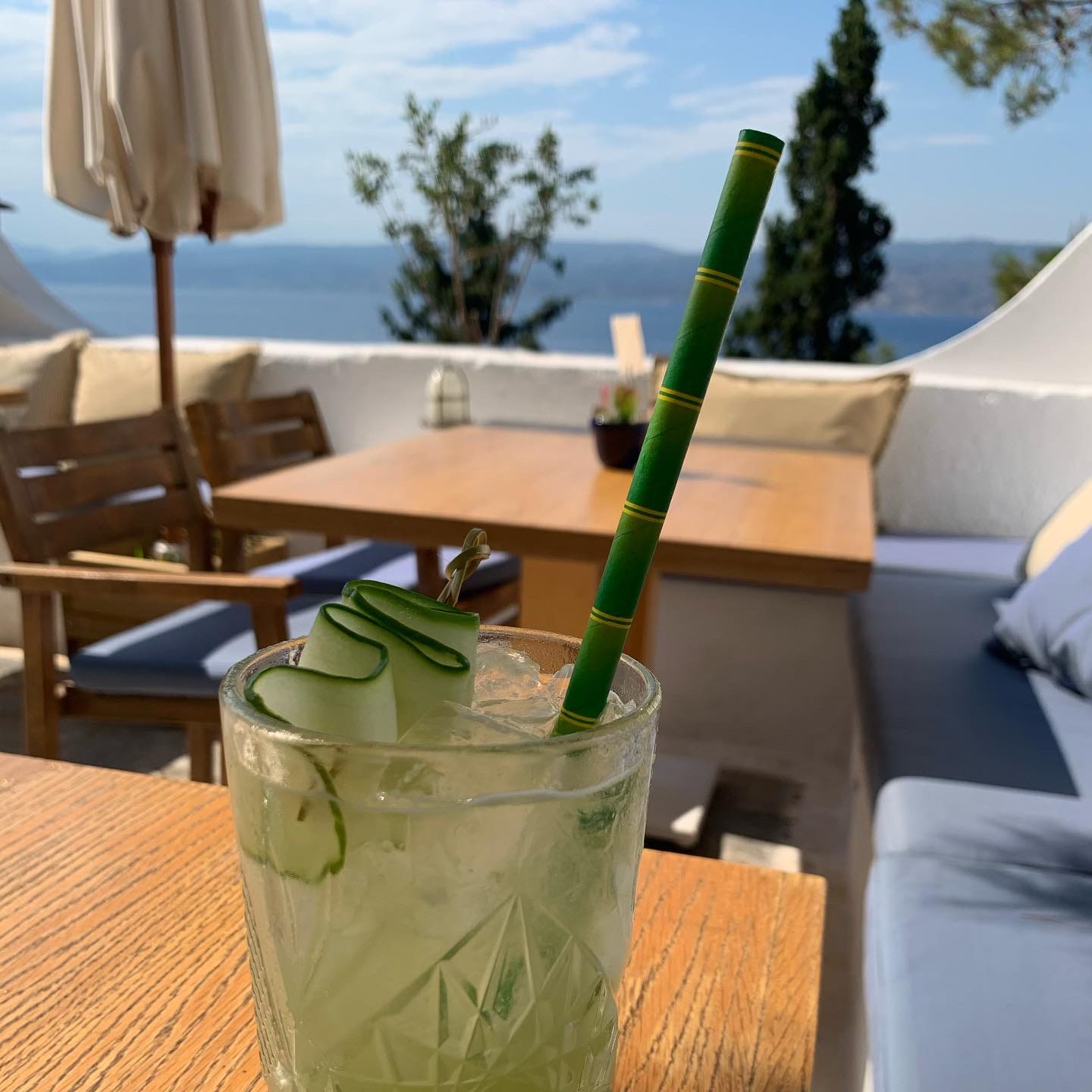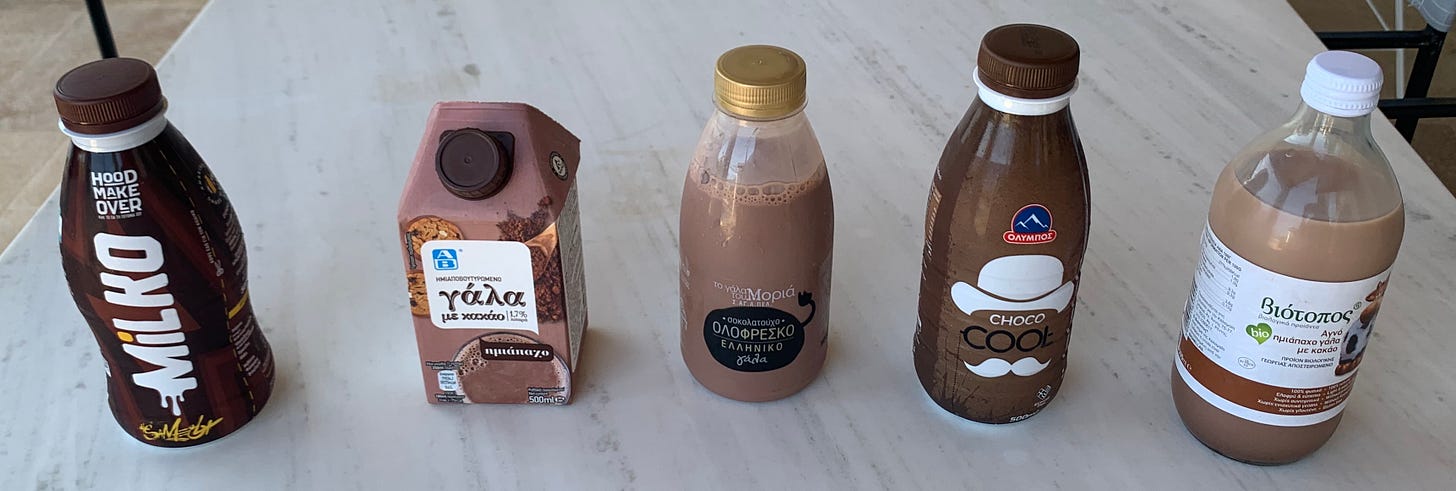5-Minute Summer Salad, Straight from Greece
One dish, one knife, one cutting board...zero patience required
Dear Wanderers,
By the time my family arrived in Plepi, Greece in July of 2020, I was seriously jonesing for a salad. We’d been living for two years in Paris, where salads often involve boiled potatoes and soft, heavily marinated veggies.
Fortunately, everywhere we went in the Southern Peloponesse, the same salad was on the menu. The only time it was called “Greek salad” was the one time we ate lunch at a resort. Because EU borders were still closed, the resort was entirely abandoned, with the exception of a few lonely workers.
I don’t usually do recipes here on The Wandering Writer, but there’s so little to a traditional Greek salad, it’s barely a recipe. It involves a little slicing, no dicing, no cooking, and no whisking. Here goes.
Start with good tomatoes. I do this by smell, the way my Mississippi grandmothers taught me. They grew their own tomatoes, which always smelled amazing, but in a store or farmer’s market, choose the tomatoes that smell most like, well, dirt and sun. For this iteration, I went with tomatoes on the vine, which often smell more tomato-like than Roma tomatoes or even heirloom tomatoes. Roma tomatoes are perfect for Greek salad if you can find good ones.
You’ll also want a couple of green bell peppers. You can use another color if you want, or if it’s all you have on hand, but I never saw red, orange, yellow peppers in a salad in Greece. Green bell peppers have a distinct flavor, less sweet than their colorful counterparts, and this salad isn’t meant to be sweet.
Of course, cucumbers. I use garden cucumbers—the most common type in American grocery stores—but you could also use Persian cucumbers, or English if you don’t mind the sweetness.
Feta. Packaged as a block, in brine. Never crumbled. More on this in a minute.
Olives. I use mixed, pitted olives sold at the deli counter, a combination of Kalamata and nicoise and large green olives (there are many types of large green olives—I don’t know what they’re called and they all taste good to me), but you can use whatever type you like. In Greece, you’ll find mostly Kalamata olives in a salad, but I like the crunch of green olives too.
Extra virgin olive oil. Obviously.
A red onion.
Zero patience. This salad takes five to seven minutes to make, including the slicing part. When you’re finished, it looks sort of like this.
Easy with the knife tricks
The first thing I noticed about salads in Greece is that everything is bigger and less fussed-with than in an American or French salad. Tomatoes, cucumbers, bell peppers, and even onions are all cut into big chunks. On top of this melange of crunchy goodness sits a block of feta. You should never buy crumbled feta for your Greek salad.


Since I use garden cucumbers, which have a big moat of seeds right down the middle, I seed them, but that’s up to you. Seeding a cucumber only takes a few seconds—you just cut it in half and run a spoon down the middle. I usually don’t bother seeding the tomatoes, because by the time I’m finished I’m like, “wait, where’s the tomato?”, but you can seed them if you prefer a drier salad.
After spending about three minutes cutting up your veggies, throw them all into a bowl and toss some whole olives on top. Now it’s time for the feta. I buy the block of feta packed in brine, then cut it into large chunks, which is cheating, but it still has a much meatier, firmer, more satisfying texture than the crumbled stuff. If you don’t want to cheat, just cut one large rectangle of feta and lay it on top.
Then add more feta. Okay, maybe a little more. And a bit more. (It just occurred to me that perhaps Greek salad is a feta delivery system in the same way that a baguette is a butter delivery system and a tomato sandwich on Wonder bread is a mayonnaise delivery system: the base is great, but you could actually be pretty happy with just the topping).
The final step is to drizzle the salad with extra virgin olive oil. You can use salt and pepper if you like, but you don’t need it, because the feta and olives are salty, and the onions add a peppery zing.
When I make this salad, I add the ingredients into a glass storage dish as I cut them, and I use as many veggies as will fit in the container. For this version in a one-quart glass dish, I used two tomatoes-on-the-vine, one bell pepper, about a dozen olives, one large garden cucumber, and one medium red onion. I make the salad as soon as I get the veggies home, then refrigerate it, so it’s there whenever I have a hankering for salad. I suppose it would keep well for three days in the fridge, but mine never lasts more than two days, because I can’t get enough of it.
My son doesn’t like tomatoes and my husband doesn’t like olives, so I don’t even have to share. For my son, I keep a watermelon-feta salad in the fridge in the summer. My husband is only ever truly content with unlimited supplies of Ovaltine. (A reviewer for a major newspaper once wrote of one of my books, “No grown man drinks this much chocolate milk.” This reviewer had never met my husband.)
Of all of the trips we made when we were living in Paris, Greece was my favorite. The food had a lot to do with it, but so did the timing. During that week in Greece, it felt as though we were truly enjoying life again, after the first terrifying Covid spring. After the tightly controlled, carefully prescribed environment of Paris (where I was once so shocked to hear birds chirping at the Jardin Matignon that I went searching for the source and found a speaker high up in the trees), Greece felt green and wild, briny and vibrant and alive…much like a traditional Greek salad.
I hope to return to Greece before too long, but in the meantime, we’ll always have salad.
I leave you with this salad from Winston Salem, North Carolina, which has much in common with a French salad, for better or worse. IMHO, Winston can be forgiven bad salads because it does fried chicken like nobody’s business. Paris can be forgiven bad salads because: bread.
If you enjoyed this post, you might also like Searching for Leonard Cohen’s House in Hydra.
Searching for Leonard Cohen's House in Hydra
In July of 2020, after lockdown had ended and EU borders opened, we escaped crowded Paris for a remote region of Greece. We stayed outside of Ermioni in the Southern Peloponnese. Our rental house was about a twenty-minute walk down the beach from a beautiful resort. My husband had suggested the resort, but we’d ultimately chosen the house instead for Co…
For further reading: I searched for Greek writers on Substack and found , an Athens native who is also the head of writer relations on Substack. See old news from Old Athens.













What a place to hang out in 2020!
Ermioni and the Saronic islands stole our hearts:
https://open.substack.com/pub/marcoandsabrina/p/ermioni-peloponnese-greece-2018?r=10ijux&utm_campaign=post&utm_medium=web